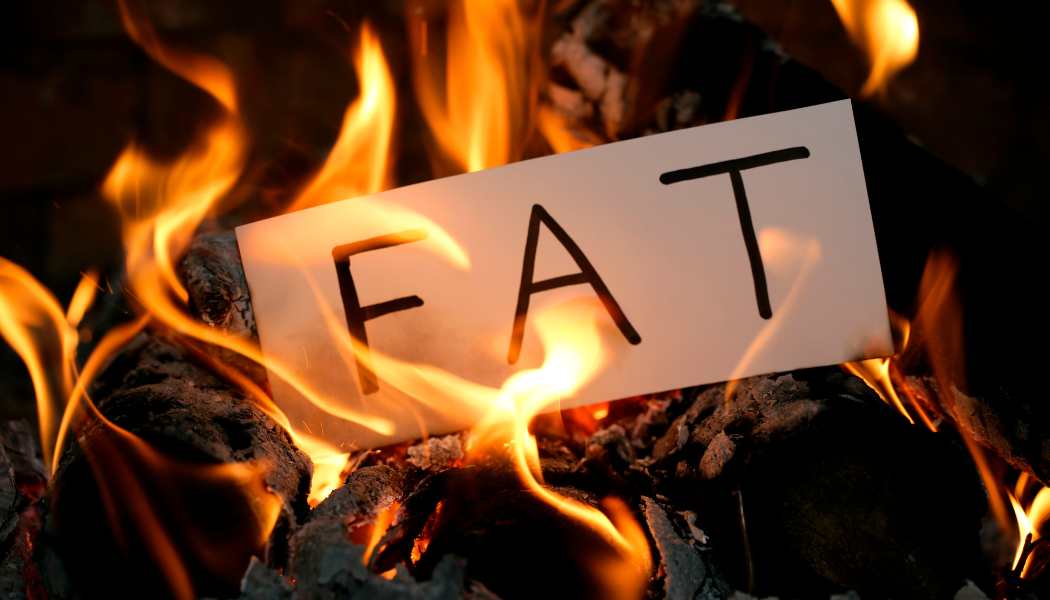The term fat burner often brings to mind pills, powders, or supplements promising fast weight loss. But in reality, a fat burner isn’t just a product — it’s any strategy, food, or activity that increases your body’s ability to burn stored fat for energy.
While some supplements may offer small benefits, the most effective fat burners are your own habits: what you eat, how you move, how you sleep, and how you manage stress. This article will guide you through proven, science-based fat-burning strategies to help you reach your goals safely and sustainably.
Common Misconceptions About Fat Burners
Before diving into what works, let’s clear up some persistent myths.
Myth: Fat burners magically melt away fat
There’s no product that can replace proper diet and exercise. Most fat burners only have minor effects, and many come with side effects.
Myth: You need expensive supplements to burn fat
While some ingredients (like caffeine or green tea extract) may slightly boost metabolism, fat loss still requires a calorie deficit.
Myth: Sweating means you’re burning fat
Sweating is your body’s way of cooling down — not a direct indicator of fat loss.
Myth: Eating fat makes you fat
Healthy fats (like avocado and olive oil) can actually support fat loss by promoting fullness and hormonal balance.
How Fat Burning Works
What Is Fat Burning?
Fat burning refers to your body’s process of using stored body fat as energy. To trigger fat loss, you need to:
-
Create a calorie deficit (burn more calories than you consume)
-
Support hormonal balance (like insulin and cortisol)
-
Preserve lean muscle mass, which burns more calories than fat
When done right, fat loss means you’re losing fat, not muscle or water weight.
What Influences Fat Burning?
-
Total calorie intake and expenditure
-
Hormonal health (insulin, cortisol, leptin, thyroid hormones)
-
Sleep quality
-
Stress levels
-
Physical activity (especially strength training)
-
Nutrient timing and macronutrient balance
Proven Fat Burner Methods (With Scientific Support)
1. Strength Training
Muscle is metabolically active, and lifting weights boosts your resting metabolic rate. It also prevents muscle loss during fat loss phases.
-
Train 2–4 times per week
-
Use compound exercises like squats, deadlifts, and pushups
-
Focus on progressive overload (gradually increasing weight or reps)
2. High-Intensity Interval Training (HIIT)
Short bursts of intense activity followed by rest increase fat burning during and after workouts due to the EPOC effect (Excess Post-Exercise Oxygen Consumption).
-
20–30 minutes, 2–3 times per week
-
Combine sprints, jump squats, or kettlebell swings with rest intervals
3. High-Protein Diet
Protein helps maintain lean muscle and has a high thermic effect, meaning your body burns more calories digesting it.
-
Aim for 1.2–2.0 grams of protein per kg of body weight
-
Best sources: eggs, fish, lean meats, tofu, legumes, Greek yogurt
4. Calorie Deficit
Fat burning can’t happen without a consistent energy deficit.
-
Start with a moderate deficit: 300–500 calories/day
-
Avoid extreme restriction, which can slow metabolism and cause muscle loss
5. Get Quality Sleep
Sleep deprivation increases hunger hormones (ghrelin) and lowers satiety hormones (leptin), often leading to overeating.
-
Aim for 7–9 hours of uninterrupted sleep
-
Create a wind-down routine and reduce screen exposure at night
6. Natural Thermogenic Foods
Certain foods may slightly enhance calorie burning due to thermogenesis.
-
Green tea (contains EGCG and caffeine)
-
Cayenne pepper (capsaicin)
-
Coffee (in moderation)
-
Apple cider vinegar (may help blood sugar regulation)
Sample Daily Fat-Burning Routine
| Time | Activity |
|---|---|
| 7:00 AM | Wake up, hydrate with water + lemon |
| 7:30 AM | 20-min fasted walk or light cardio |
| 8:00 AM | High-protein breakfast (e.g., eggs + greens) |
| 12:30 PM | Balanced lunch (lean protein + veggies + fat) |
| 3:30 PM | Snack (protein smoothie or Greek yogurt) |
| 6:00 PM | HIIT or strength workout (30 mins) |
| 7:00 PM | Dinner (salmon, sweet potato, broccoli) |
| 9:30 PM | Screen-free wind-down routine |
| 10:00 PM | Sleep |
FAQs and Myths Busted
Do fat burner supplements work?
Some contain ingredients like caffeine or green tea that may slightly boost metabolism, but the effects are modest and temporary. Lifestyle changes have a much greater impact.
Can I burn fat without exercise?
Yes — but exercise accelerates fat loss and helps preserve muscle. Combining both diet and movement delivers the best results.
Are fat-burning foods real?
Some foods slightly increase calorie burn, but no food melts fat. Think of them as a small boost, not a solution on their own.
Expert Advice & Recommendations
Dr. Elena Foster, Nutrition Scientist:
“The most effective fat burner isn’t in a bottle — it’s a smart routine that includes movement, nutrition, sleep, and mindset.”
Coach Marcus Hill, CPT:
“Focus on building muscle, not just losing fat. More muscle means a faster metabolism and long-term results.”
Conclusion: Sustainable Fat Loss Is a Lifestyle
Fat burners are not magic fixes — they are part of a holistic strategy. The real “secret” is consistency with your habits, not quick fixes. By combining strength training, smart eating, quality sleep, and daily movement, you’ll optimize your body’s natural ability to burn fat.
Start small. Build momentum. Stay consistent.
That’s the real fat-burning formula.
Fat-Burning Meal Guide
Goal: Increase satiety, improve blood sugar stability, and promote fat metabolism.
Guiding Principles
-
Eat protein at every meal
-
Choose fiber-rich vegetables to aid digestion and fullness
-
Include healthy fats in moderation (they help control hunger hormones)
-
Stay hydrated (drink 2–3 liters of water daily)
-
Keep processed sugars and refined carbs to a minimum
Breakfast Options (Kickstart metabolism)
1. Protein-Packed Scramble
-
2 whole eggs + 2 egg whites
-
Spinach, onions, mushrooms sautéed in olive oil
-
Optional: sprinkle of feta or avocado slices
➡️ High in protein + fiber + healthy fat
2. Greek Yogurt Parfait
-
1 cup plain Greek yogurt
-
½ cup berries (blueberries, raspberries)
-
1 tbsp chia seeds or flaxseeds
-
1 tbsp almonds or walnuts
3. Metabolic Smoothie
-
1 scoop protein powder
-
1 handful spinach
-
½ banana or ½ cup frozen berries
-
1 tbsp peanut or almond butter
-
Unsweetened almond milk
➡️ Great post-workout breakfast or busy-morning option
Lunch Options (Keep energy stable, prevent afternoon cravings)
1. Grilled Chicken Power Bowl
-
Grilled chicken breast
-
Quinoa or brown rice (½ cup)
-
Roasted broccoli, carrots, and zucchini
-
Drizzle of tahini or olive oil
-
Fresh herbs or lemon for flavor
2. Tuna Avocado Salad Wraps
-
Tuna mixed with mustard or Greek yogurt
-
½ avocado mashed
-
Romaine or iceberg lettuce leaves
-
Cucumber + bell pepper slices
➡️ Low-carb, high protein and healthy fat
3. Lentil & Veggie Stew
-
Lentils, carrots, celery, tomatoes, spinach
-
Simmered in vegetable broth with garlic, turmeric, cumin
➡️ High-fiber + plant-based protein
Dinner Options (Light yet filling to support overnight fat burning)
1. Baked Salmon & Greens
-
Salmon fillet (rich in omega-3s)
-
Steamed green beans or asparagus
-
½ baked sweet potato
2. Turkey & Veggie Stir-Fry
-
Ground turkey cooked with garlic, ginger, and coconut aminos
-
Broccoli, bell peppers, bok choy sautéed in olive oil
-
Serve over cauliflower rice or brown rice
3. Tofu Sheet Pan Meal
-
Firm tofu cubes roasted with olive oil, turmeric, and chili flakes
-
Brussels sprouts, onions, and squash
➡️ Perfect for meal prep and packed with plant protein
Snack Ideas (Optional – Choose 1–2 per day if needed)
-
Boiled eggs + a few olives
-
Celery sticks + almond butter
-
½ avocado with sea salt & lemon
-
Cottage cheese + cucumber slices
-
Handful of almonds or pumpkin seeds
-
Protein shake (unsweetened, low-carb)
-
Berries with a spoonful of Greek yogurt
Bonus Tips to Maximize your Fat Burner Method
-
Drink green tea or black coffee (without sugar) to boost metabolism
-
Add spices like cayenne, ginger, cinnamon, and turmeric
-
Incorporate fasted morning walks for extra fat oxidation
-
Avoid late-night snacking — allow 12 hours between dinner and breakfast (or try intermittent fasting if suitable)


